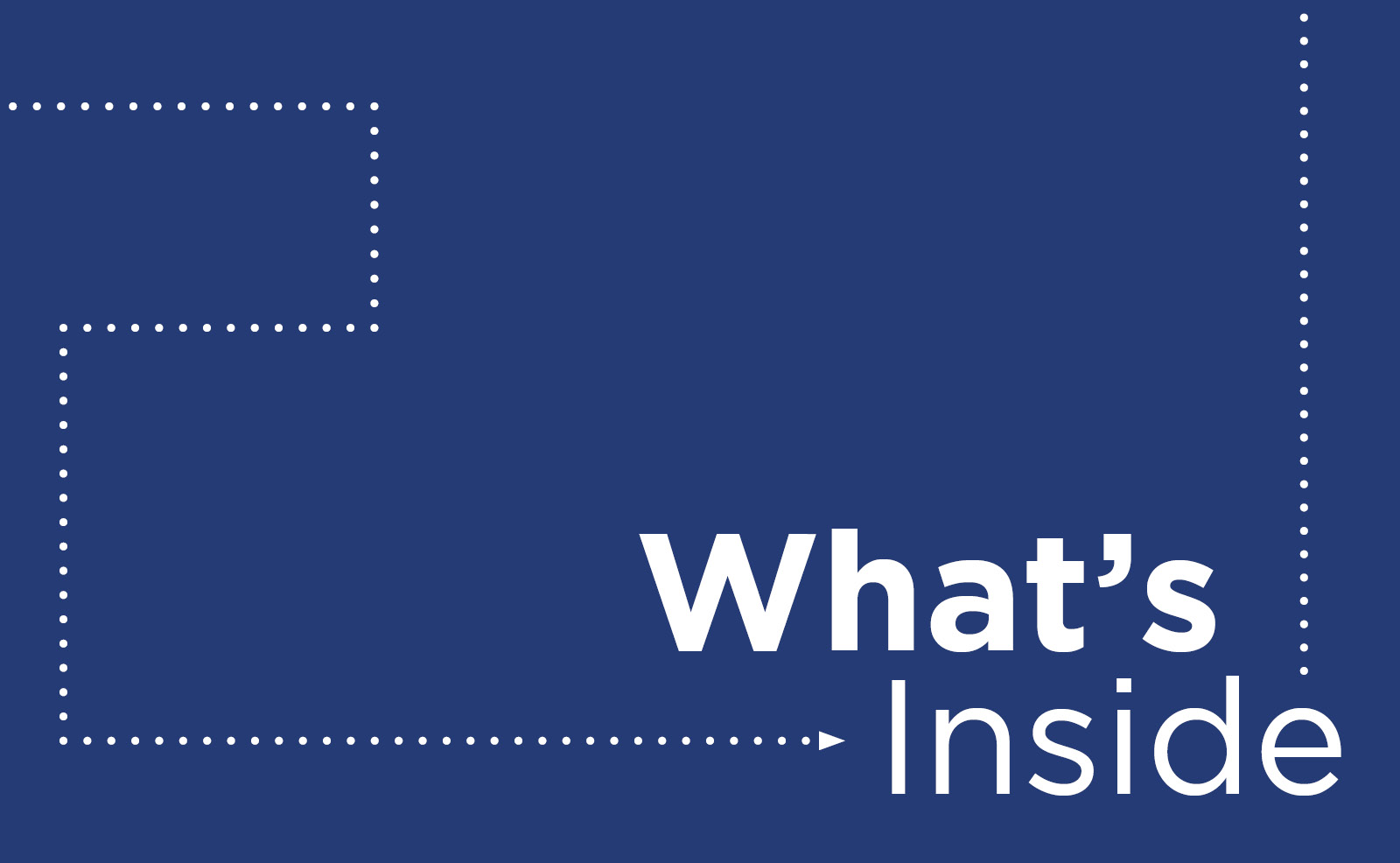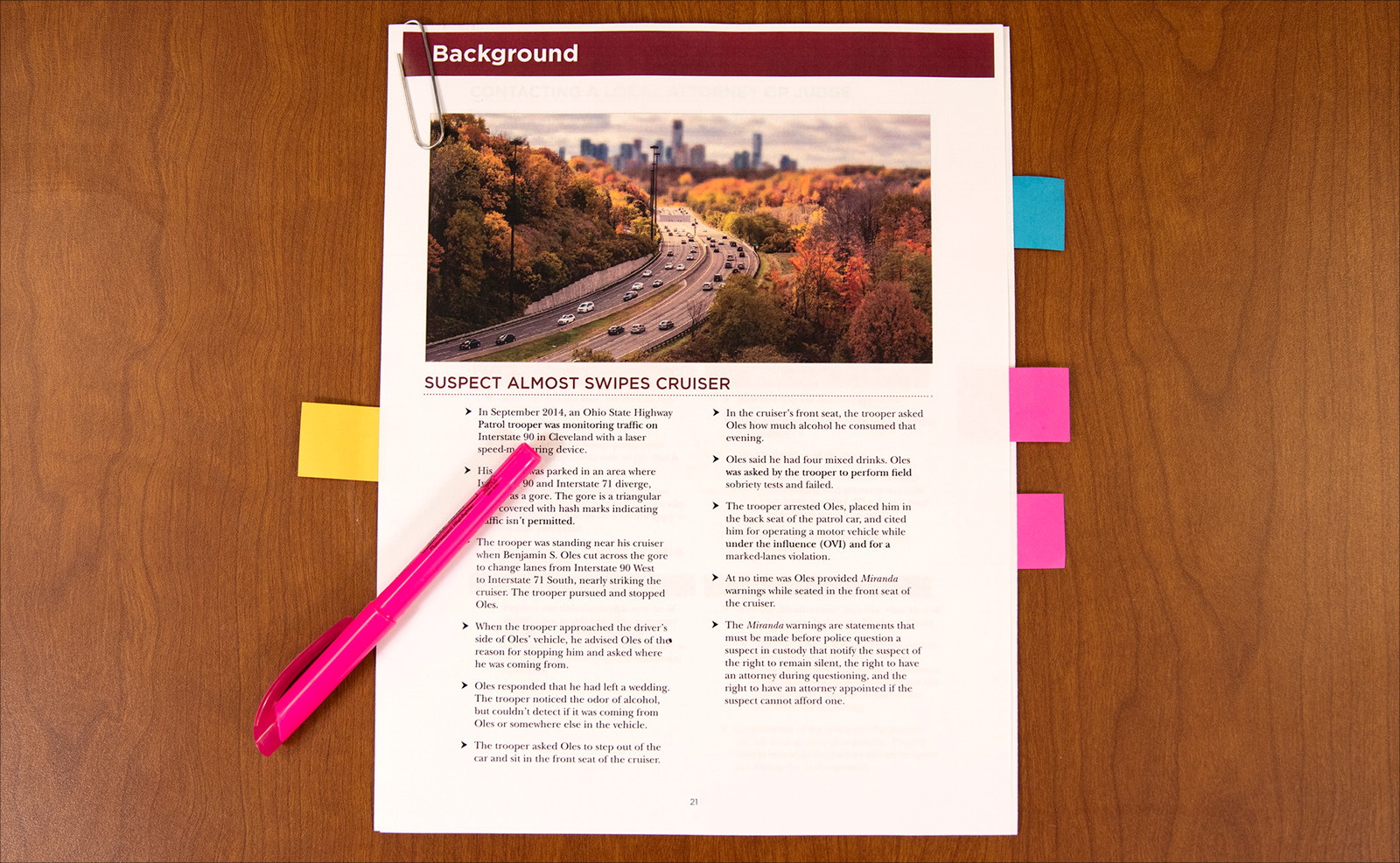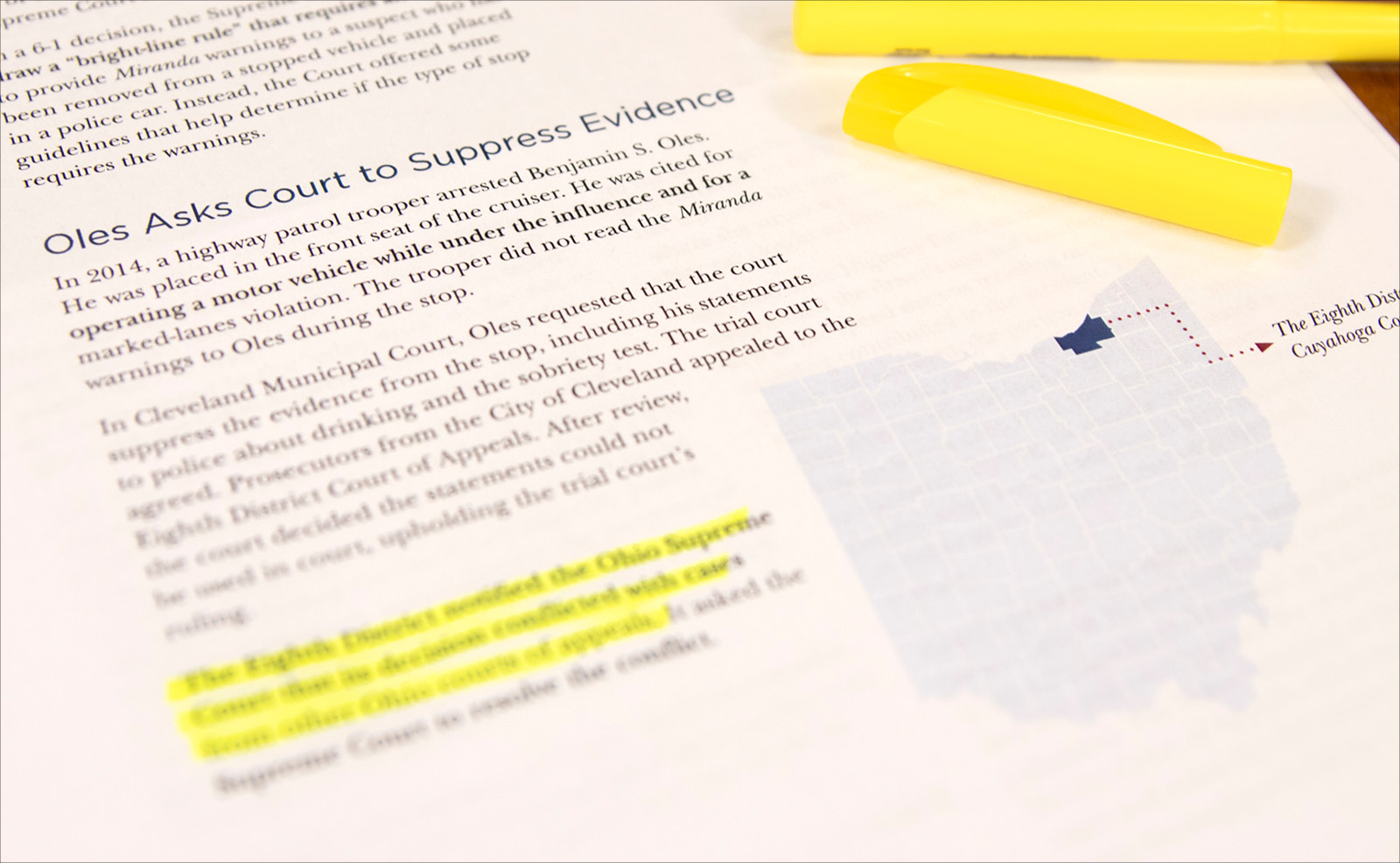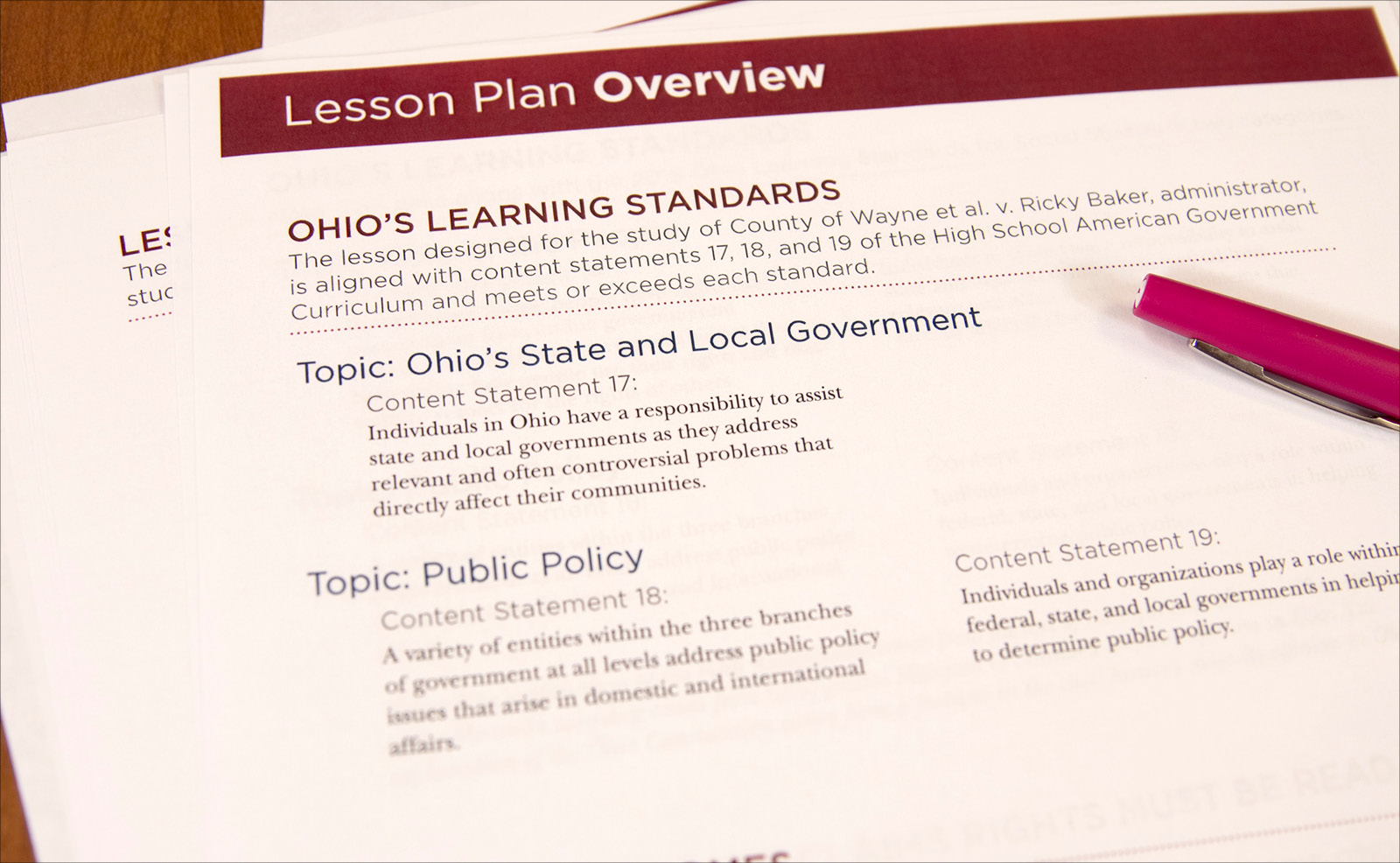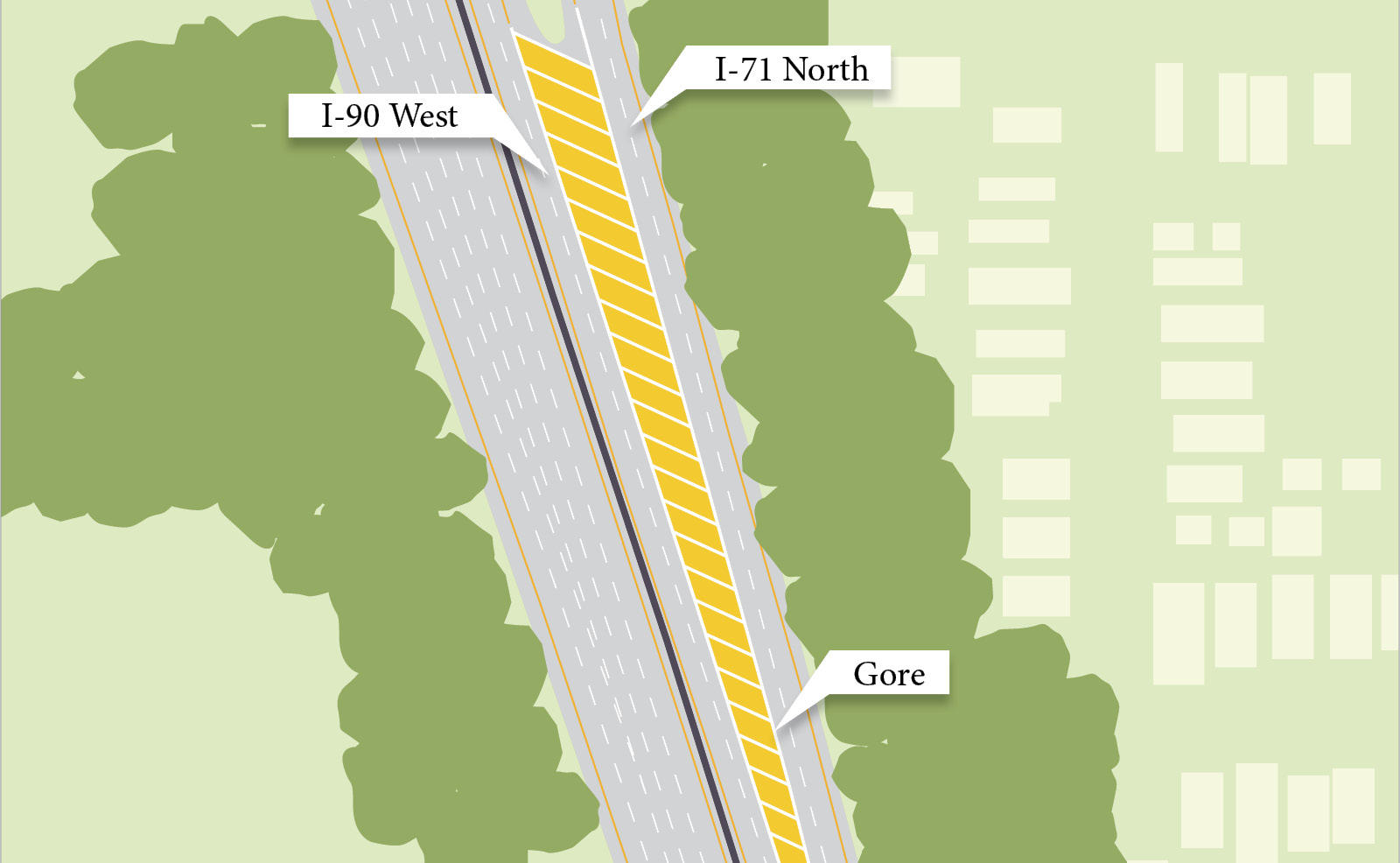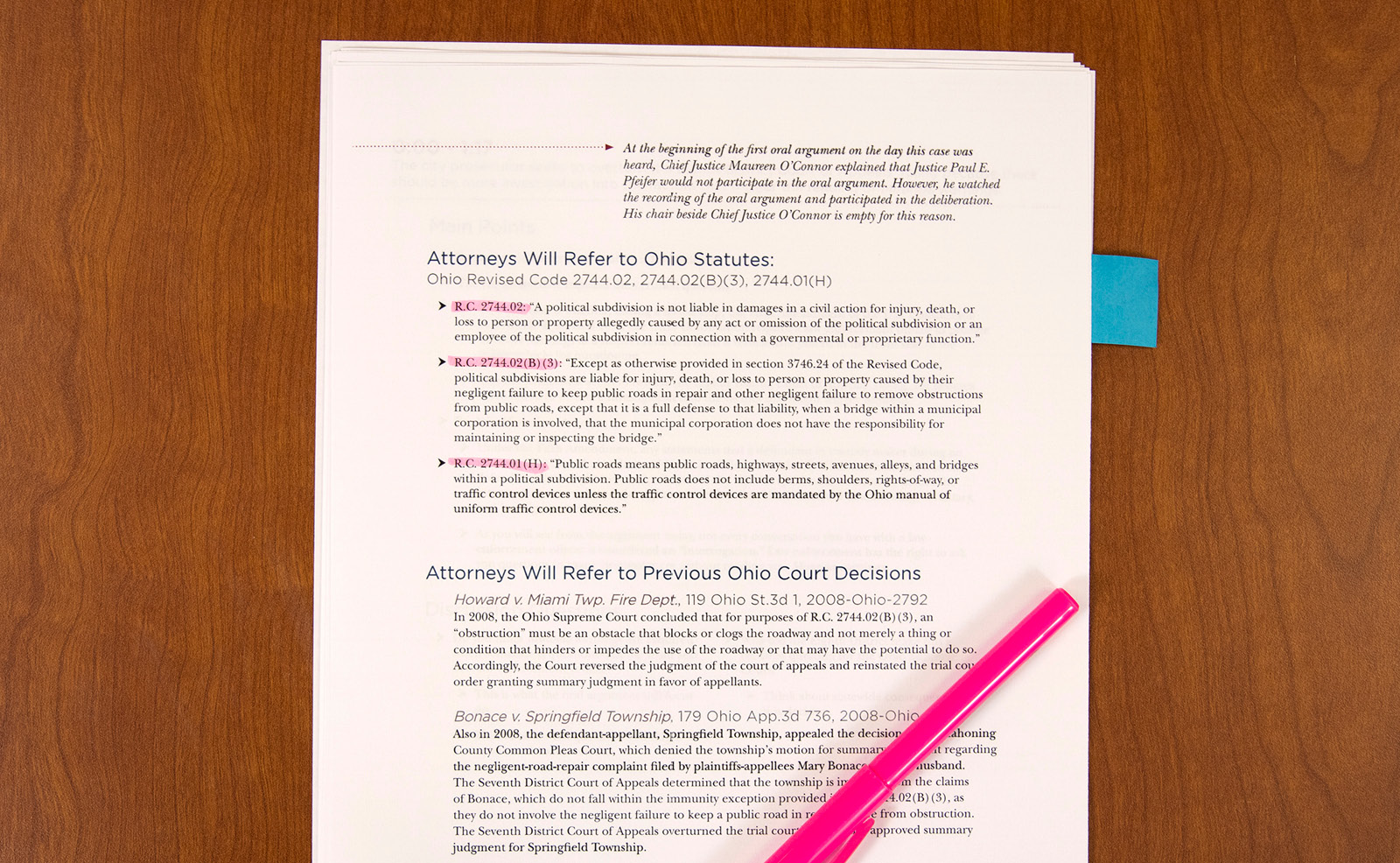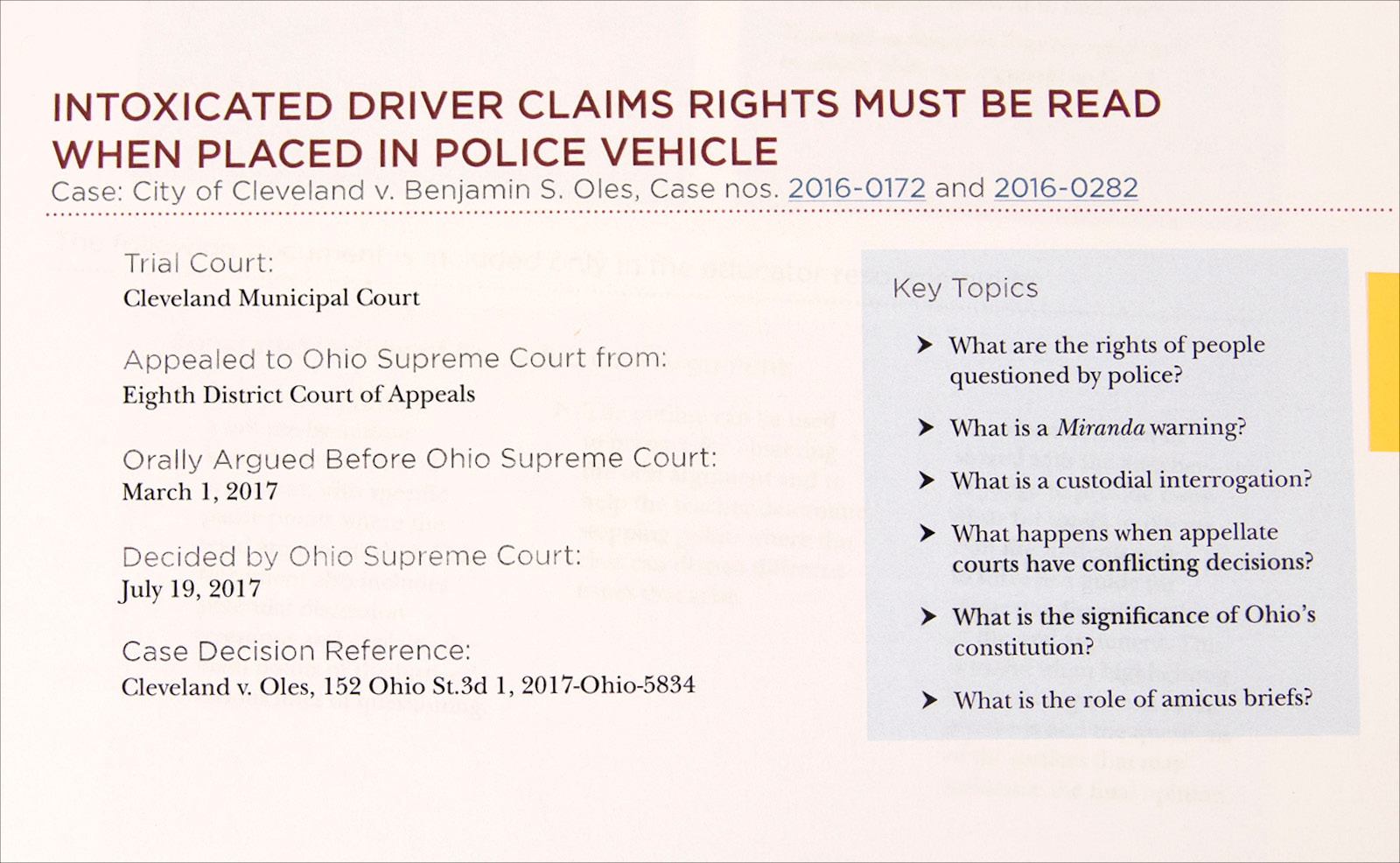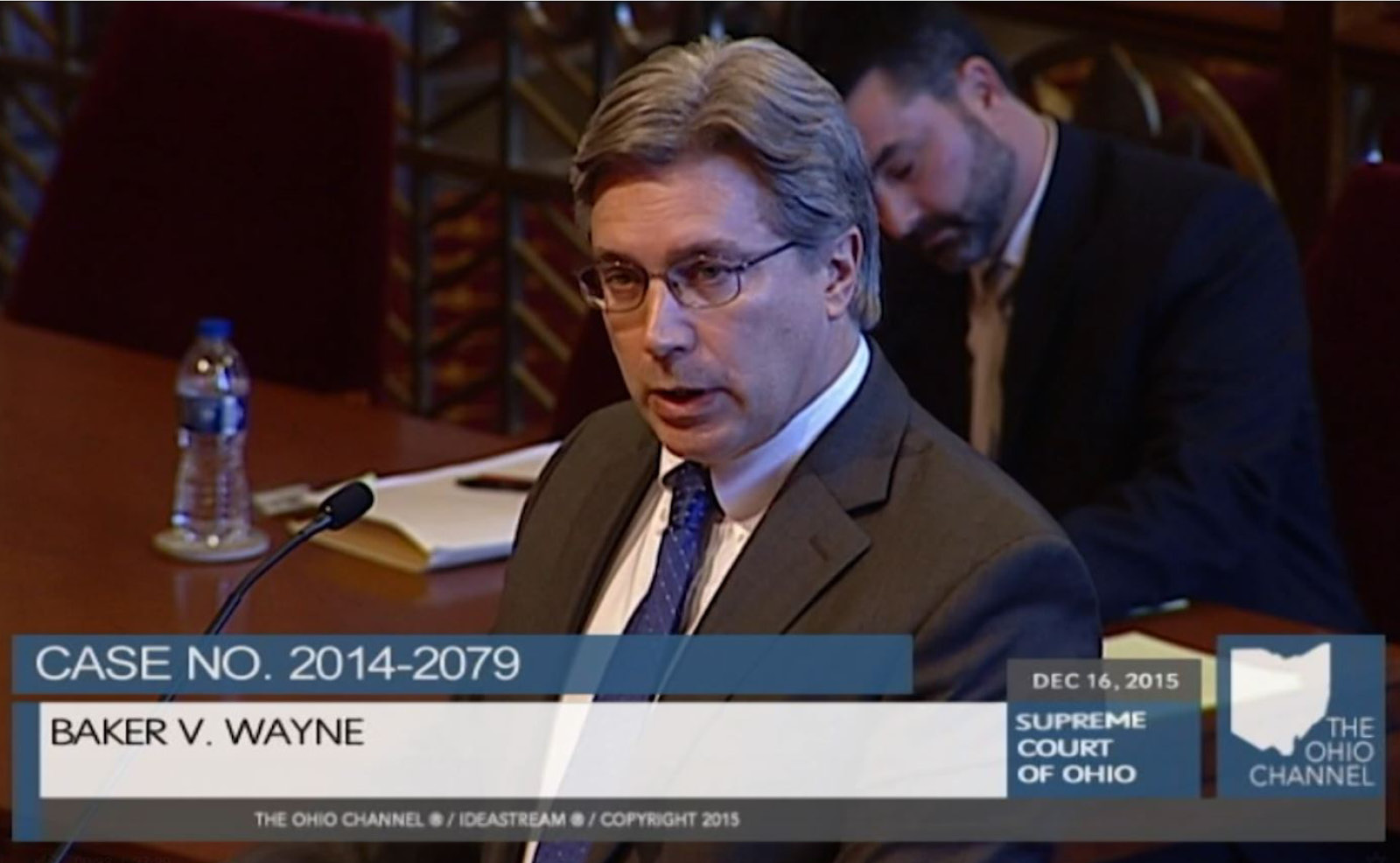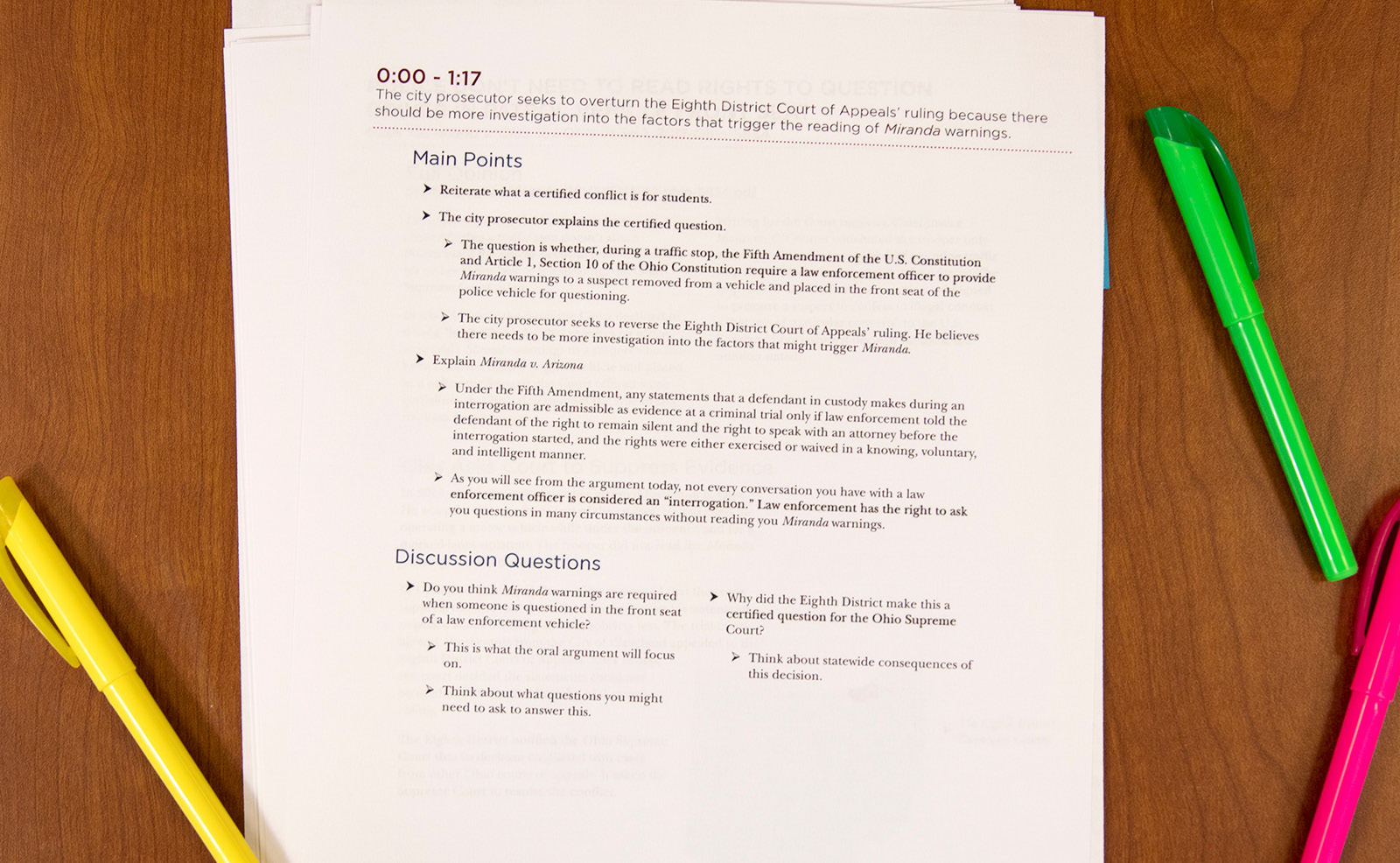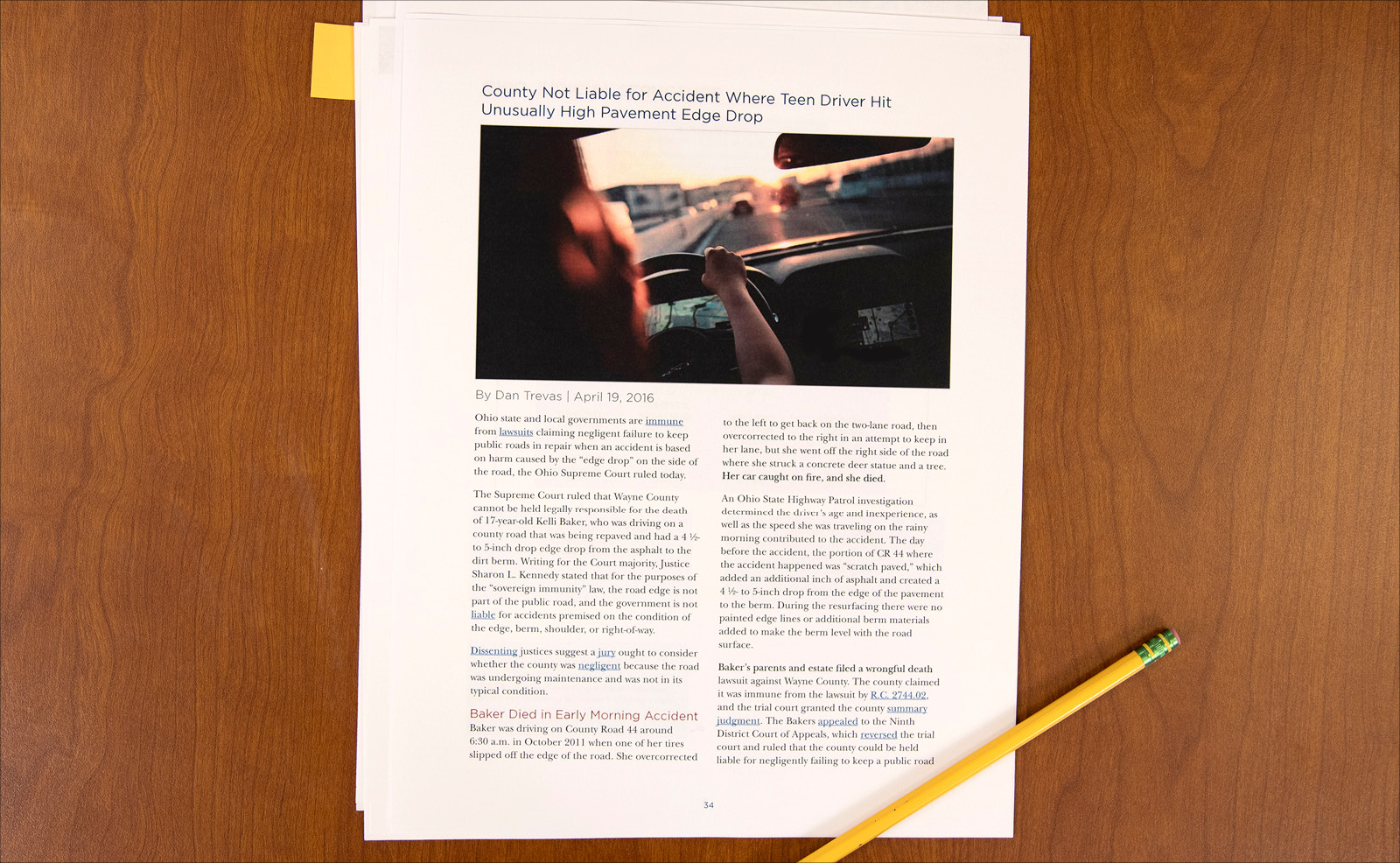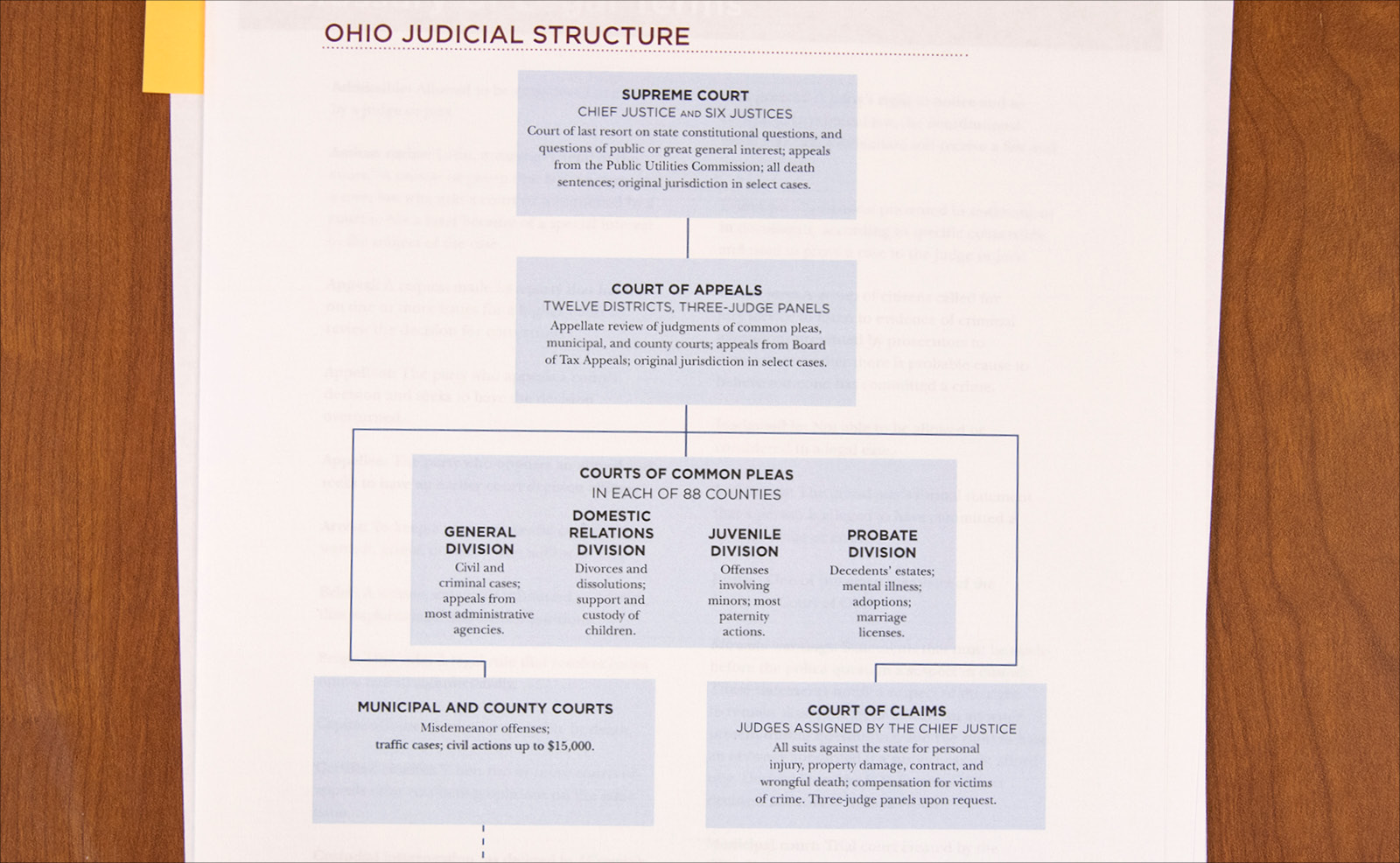Out of the Courtroom, Into the Classroom
The Ohio Supreme Court is on a mission to demystify the state’s judicial branch. As part of the effort, the Court has designed a multi-faceted course for high school students. With vibrant images, clear content, and video that puts you in the room, the curriculum gives teachers compelling and informative tools to lead students toward a fuller understanding of the courts.
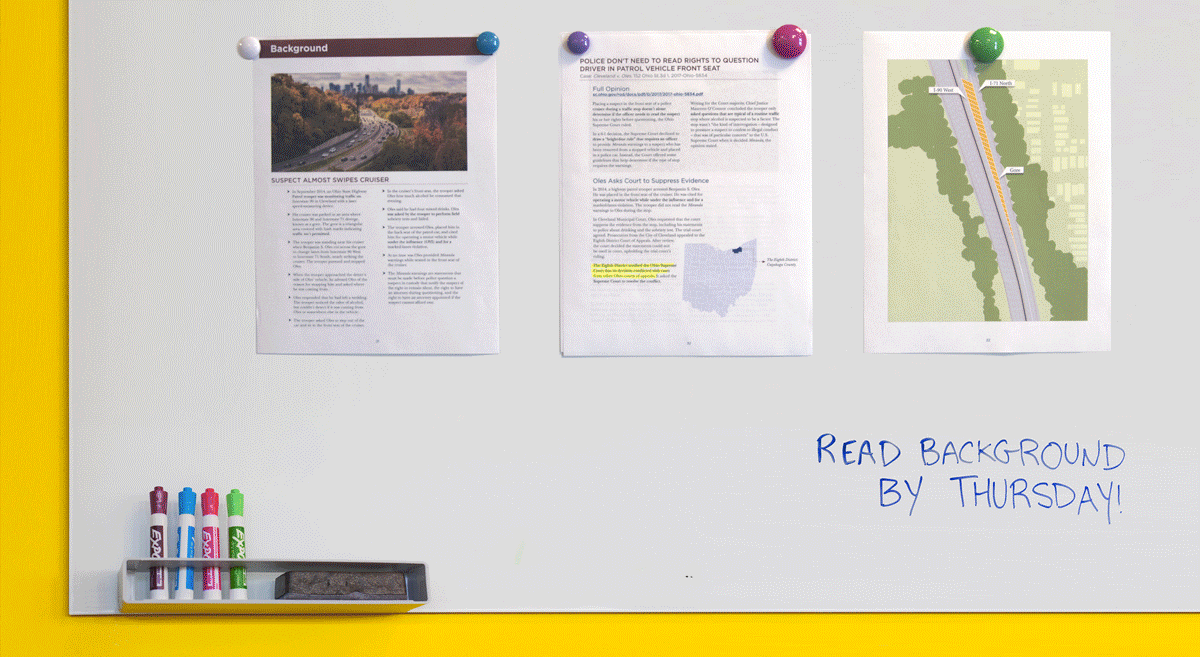
At the apex of the state’s court system, the Ohio Supreme Court makes decisions about important legal issues. Less understood at times is the fact that these rulings impact people’s lives each day. After all, the Supreme Court has decided whether you can be ticketed by an automated red-light camera, the rules your community can put in place to address fracking, the appropriateness of rates for electric and gas utilities, and under what circumstances a police officer can search you, your car, or your home.
“We often receive requests from teachers about how to teach students about the Ohio Supreme Court,” said Ryan Suskey of the Ohio Center for Law-Related Education.
Scott Hambrick, who teaches U.S. government at Springfield High School, notes: “Available curriculum is always about federal courts. Teachers really have to search to find curriculum about state courts.”
Last year, the staff of the Supreme Court’s Civic Education Section embarked on designing a curriculum for high school students to address this gap, and asked OCLRE and teachers to share feedback.
The newly launched program, called “Under Advisement: Ohio Supreme Court Cases on Demand,” follows selected cases on their journeys through the state’s courts — which hear 96 percent of all court proceedings in the country, according to the National Center for State Courts. Each case study begins with the facts that brought a situation to the courts. It then walks students step by step through the legal system, from the filing of charges or a lawsuit in trial court to the appeals made to the regional appellate court and then the Ohio Supreme Court. At the Supreme Court level, the materials thoroughly explore case briefing, oral arguments, and the ultimate ruling.
Christina Cross, who teaches an American politics course for college credit at Kenton High School, described this approach as novel.
“How does a lawsuit get filed in the first place? It’s a mystery to students,” said Cross, who’s also a practicing attorney and previously taught civil procedure at Thomas Jefferson School of Law in San Diego. “I find that teachers end up doing a cursory job of explaining this to students because they don't truly understand it themselves. Or, if they do understand it, as I do, you can end up going down a rabbit hole with the complexity of jurisdiction.”
High school teachers more often delve into the implications of a handful of U.S. Supreme Court decisions that interpret the U.S. Constitution instead of talking about the route cases take to reach the highest court in the country, or in the state, she said.
“For simplicity’s sake, we tend to just focus on the outcome of big decisions, rather than the process – how the courts work,” Cross notes. “But Under Advisement shines a light on how cases travel through the state court system.”
Cases with Relatable Stories Chosen
Under Advisement is named for the chief justice’s comment at the end of each oral argument, “We’ll take the matter under advisement, and you’ll be notified of our decision.” The course, which is free and available online, offers a packet designed for students and one for teachers, which mirrors the student’s but includes extras, such as a multi-day lesson plan.
The Court selected two cases to launch the program. One is a civil case about a teen who died in an auto accident. The teen’s family sued because they believed the road conditions caused the accident. The second – a criminal appeal – turns on the point when law enforcement must advise an individual of Miranda rights before continuing with questioning.
Selecting topics that are Ohio-specific and that students can relate to keeps the content from being too foreign, Cross said.
Part of what Hambrick likes about the lesson plan in the civil case (Baker v. Wayne County) is how it explains what protections government has, what a local authority is, and how the state makes determinations about local actions.
“It takes complex issues and makes them simple,” he said.
Visuals Elevate Interest, Simplify Concepts
Each packet includes eye-catching photos and illustrations that help students understand the case. There also are graphics about the structure of Ohio’s court system and the location of the district appellate court that heard the case.
Video of the arguments made by each side’s lawyers to the justices is another visual piece of the program. The Supreme Court broadcasts, live-streams, and archives all oral arguments. Video of the sessions gives students insight into the Supreme Court process – from the arguments lawyers make at this level to the types of questions the justices ask.
Oral argument in each case typically lasts about 30 minutes. To help teachers zero in, as needed, on the most critical moments, the teacher’s packet has an annotated guide to the arguments. The guide marks specific timeframes and identifies topics covered in each segment.
“The aesthetic design is fantastic,” Hambrick said. “The visuals help the cases come to life.”
Content Filled with Nuggets for Understanding Courts
The Court made sure to align the materials with the statewide high school learning standards for government from the Ohio Department of Education. Doing so helps teachers ensure that students meet necessary requirements.
But the program does much more than that, Suskey and the teachers said.
The course content is packed with substance about each step at the Supreme Court, including a case preview, which pulls the main arguments from each side’s briefs that were submitted to the Court, as well as a news article about the Court’s decision when it ruled.
The explanation of what happened in a case before it arrived at the Supreme Court along with the previews prepare students for watching the Court in session, Hambrick said.
“Oral arguments move quickly. Together, these help. Students can follow the oral arguments better,” he notes.
Cross points out that the materials also explain the meaning of summary judgments, the importance of precedent to courts, the role state statutes play in court cases, and the function of amicus briefs.
OCLRE’s Suskey values the original Supreme Court materials and the way they challenge students.
“Rather than a textbook that summarizes an event, Under Advisement has students look at authentic material,” he said. “But Under Advisement doesn’t water down the courts. It’s not treating students like courts are beyond their reach. Instead, it’s given to them in a way they can handle. When you give students the chance to interact, they rise to the occasion.”
“Ohio is a pioneer in this effort,” Chief Justice Maureen O’Connor notes. “We wanted to create a resource that would allow high school students across the state to experience oral arguments without having to leave their classrooms. This program was designed to be useful to teachers and engaging for students, and to support the Ohio Supreme Court’s mission to keep the Court and its proceedings transparent to all.”
Educators Appreciate Analysis of Court Process
Cross said the program minimizes any intimidation or lack of expertise that teachers – most of whom aren’t lawyers – have toward teaching about the legal system.
“In both sets [teacher and student], information is presented for someone who knows nothing about the courts,” Hambrick said.
Cross agrees and endorses “the really great questions” teed up for teachers in each case. Those questions focus educators in the right direction, she said.
Suskey adds that the thoughtful structure of the materials allows teachers to pause and discuss the content with students along the way, and is presented in a realistic timeframe for the classroom. But best of all, Suskey notes, the materials are “ready-made.”
“There’s so much stuff given to teachers that are almost what they need. The Supreme Court, though, thought about teachers’ needs and provided materials that are ready to go. That’s really rare,” Suskey said.
“Teachers are dedicated to educating the next generation of citizens to be informed voters and civic leaders in our state,” said Sara Stiffler, manager of the Court’s civic education programs. “Providing engaging, standards-aligned resources to them for classrooms throughout Ohio helps support that effort.”
Students Strengthen Crucial Skills
For students who have the opportunity to visit the Supreme Court and watch an oral argument, Under Advisement fosters their understanding of the law and effectively prepares them for what they’ll see, Suskey said. Under Advisement also creates an opportunity for schools that have fewer resources or chances to visit the Court to educate students about the state’s courts.
Hambrick likes that he can use the course to teach about making good arguments and developing analytical skills.
“I frequently tell students, ‘You’re not arguing your point, you’re being argumentative,’” he said. “Lawyers give structured arguments before the Court using persuasive speech to make their points.
“The program also fosters critical thinking and writing, skills that can be transferred afterward to life outside of school,” he said.
Suskey said the program helps teach students that their role as a citizen is larger than just voting. Cross agrees.
“Whether it’s taxes or speed limits, the law will impact them no matter what,” she said. “I want students to understand how they can have their day in court. And I want them to know that advocacy and civil action can change the law.”
Teachers can view the Under Advisement student packets from the Civic Education Section of the Court’s website. To access the teacher lesson plans, email underadvisement@sc.ohio.gov.
CREDITS:

